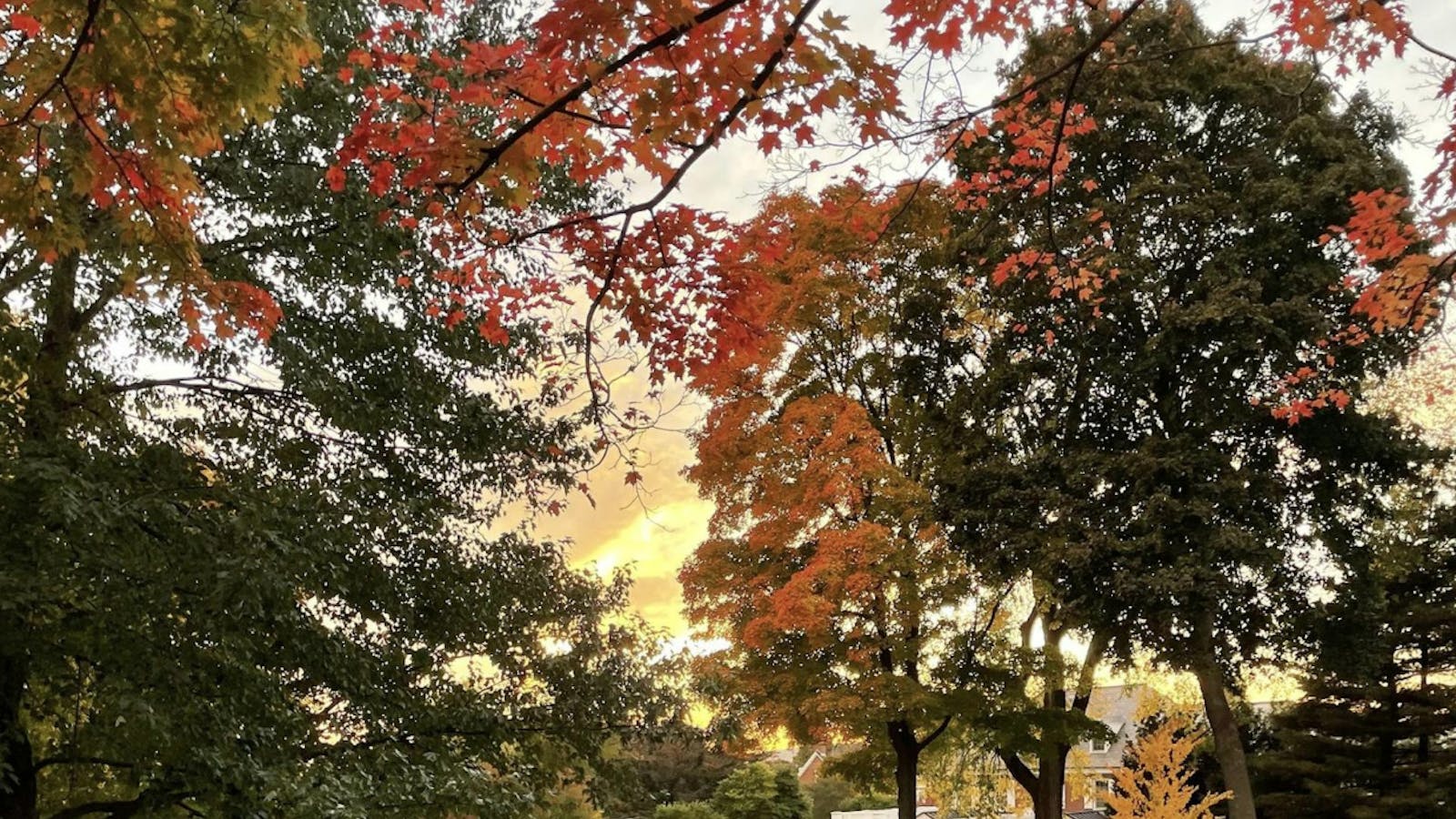As fall begins its descent on the Hill, pumpkin spice everything and cozy knit sweaters accompany the perpetual change in scenery that beckons the need to take a picture of every angle of Tufts campus. The quintessential New England autumn is characterized by vibrant hues of reds, oranges and yellows, adding a richness of colors that researchers have actually found to improve physiological stress recovery and emotional ratings. But, how are these leaves able to transform into the iconic colors of fall we know to recognize with the season?
The way our brain perceives color is dictated by reflected light — aka the light that a molecule does not absorb. This characteristic is determined by the energy gap required to excite electrons in the molecules that compose various objects. For example, carminic acid — a crucial ingredient in the pigment carmine, traditionally found in insects and used in food, cosmetics and more — will absorb green light and reflect all colors except for green. The reds and yellows, which are reflected by the carminic acid, are the reason our eyes see red.
The color of leaves is thus determined by the mixture of pigments within them. Chlorophyll, a pigment that absorbs sunlight so that plants can perform photosynthesis, is typically the dominant pigment of leaves, producing the characteristic green color. As the temperature cools and daylight shortens, however, chlorophyll begins breaking down due to a signal produced by the trees in preparation for winter. Then, the other pigments present, like xanthophyll, carotene and anthocyanin, begin showing themselves, developing those warm-toned colors throughout the leaves.
So, the next time you find yourself stopping to snap a photo of the vivid autumn landscape, take a moment to not just enjoy the beauty but also appreciate the intricate processes behind this transition. The newness that comes with the start of a school year can be overwhelming, but let the trees’ picturesque adjustment to seasonal shifts be a reminder that change in your life, too, can be beautiful.
